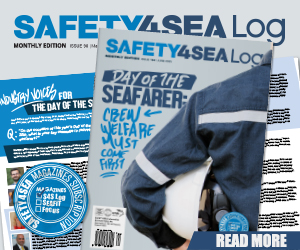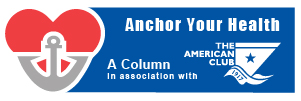The Britannia P&I Club has issued its latest edition of “Risk Watch”, in which includes an article that highlights that operations by shipowners in underwater hull cleaning to maintain the efficiency and performance of their vessels, come with inherent risks that need to be effectively managed to ensure divers safety and prevent incidents.
In particular, the article written by Slav Ostrowicki, Loss Prevention Manager, London, provides guidance to members on how to conduct diving operations safely and prepare for such operations.
Underwater hull cleaning may seem like a straightforward task, but it involves various hazards that should be carefully addressed. These hazards include:
These hazards include:
- Poor underwater visibility and/or adverse weather conditions which may affect divers ability to avoid underwater hazards or find their way around the ship.
- Divers equipment such as hoses or cables becoming entangled in the ship’s rudder, propeller, bilge keels and other underwater elements which may result in the diver becoming immobilised or trapped under water. This in turn may result in them running out of air and lead to injury or death.
- Divers being exposed to injury from moving ship equipment, such as bow thrusters and propellers.
- Divers being exposed to electrical shocks from the ship’s equipment if it is not powered down, for example types of cathodic protection and damaged
underwater cleaning devices. - Divers being pulled into or immobilised by the ship’s suction systems, when working in the vicinity of sea chests, which can result in injury or drowning.
Diving equipment running out of air, becoming damaged or malfunctioning. - Divers being affected by decompression sickness (DCS). This includes relatively shallow depths, where extended dive time may result in the need to surface quickly without following the appropriate decompression procedure.
Further events involve:
- The release of growth and debris from the hull being treated as environmental contamination. Some port and coastal state authorities take a particular view on where such operations are allowed and on what conditions. It is advisable to seek guidance in this regard and contact local correspondents if required.
- Accidental release of chemicals, oil or other contaminants into the water by the divers.
- The potential of unlawful activities connected with diving, e.g. where illegal items are placed on the hull or the ship’s structure is tampered with.
- As with any activity resulting in safety risk exposure, it is advisable that the preventive measures to address the above are considered in a systematic
manner i.e. through a structured risk assessment reflecting the identified hazards. Members may also have an existing, relevant procedure and/or the
appropriate permit-to-work in their safety management system (SMS). We have the following comments regarding the preventive measures which should be considered:- Divers should be appropriately certified, trained and experienced in underwater cleaning operations.
- The plan for diving activity should be discussed and agreed by all involved – divers, the ship command as well as deck and engine teams. This should include the general programme for the operation, the required safety precautions, communication protocols and focal persons, contingency plans and emergency protocols including emergency shutdown. The harbour master and local port authority should also be contacted prior to the start of any diving operations.
By following these guidelines and taking proactive measures to manage the risks associated with diving operations, shipowners can enhance the safety of their personnel and vessels.






























































